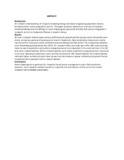Efficacy of neem chippings for mosquito larval control under field conditions

View/
Date
2015-03Author
Imbahale, Susan S
Mukabana, Wolfgang R
Language
enMetadata
Show full item recordAbstract
Background
An in depth understanding of mosquito breeding biology and factors regulating population sizes is fundamental for vector population control. This paper presents results from a survey of mosquito breeding habitats and the efficacy of neem chippings as a potential larvicide that can be integrated in mosquito control on Nyabondo Plateau in western Kenya.
Results
Six main mosquito habitat types namely artificial ponds, abandoned fish ponds, active fish ponds, open drains, temporary pools and swamps were found in Nyabondo. Early anopheline instars were mainly recovered from temporary pools, artificial ponds and abandoned fish ponds. The mosquitoes collected were Anopheles gambiae sensu lato (35%), An. coustani (46%) and Culex spp (19%). Both early and late instar larvae of anopheline and culicine mosquitoes were more abundant in the controls than in the Bti and neem treated habitats. Within treated habitats, early instar anopheline mosquitoes were recovered more from habitats provided with neem and fish compared to Bti treated habitats. All treated habitats recorded higher numbers of early instar larvae than late instars or pupae, indicating that gravid female mosquitoes still oviposited within treated habitats.
Conclusions
Neem chippings are a good tool for mosquito larval source management under field conditions. However, more research needs to be done to quantify the contribution of this tool to the overall mosquito borne disease transmission.
Citation
Imbahale, S. S., & Mukabana, W. R. (2015). Efficacy of neem chippings for mosquito larval control under field conditions. BMC Ecology, 15(1), 8.Publisher
University of Nairobi
